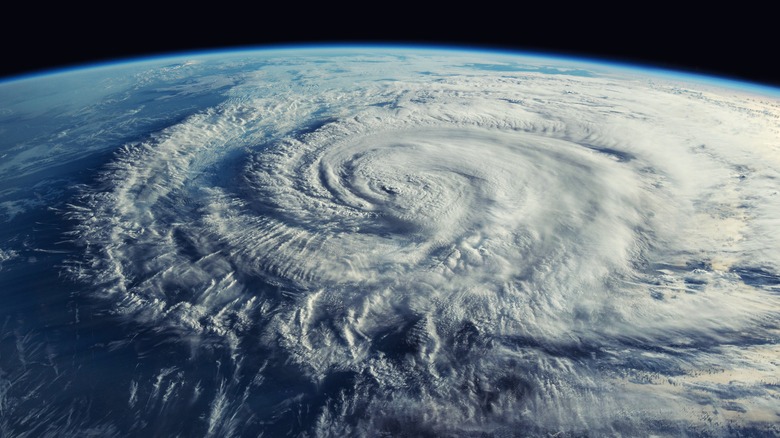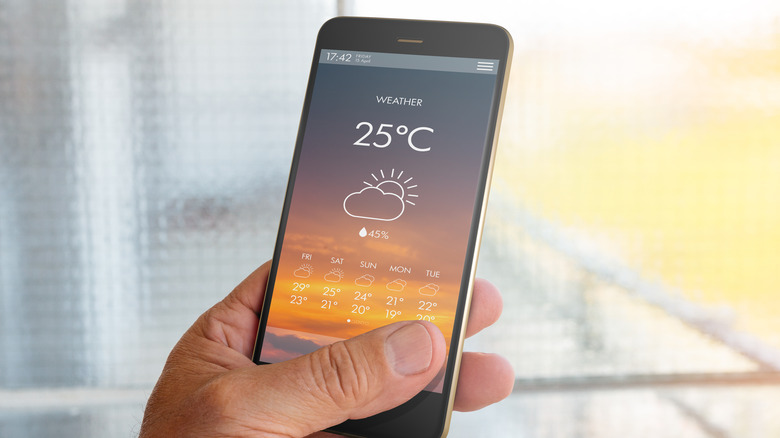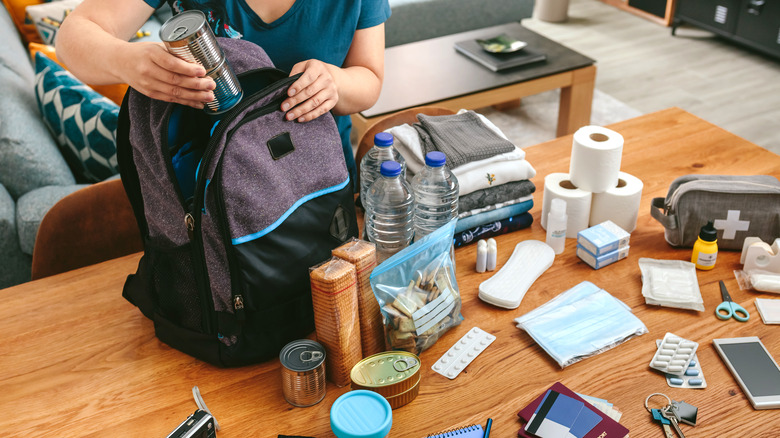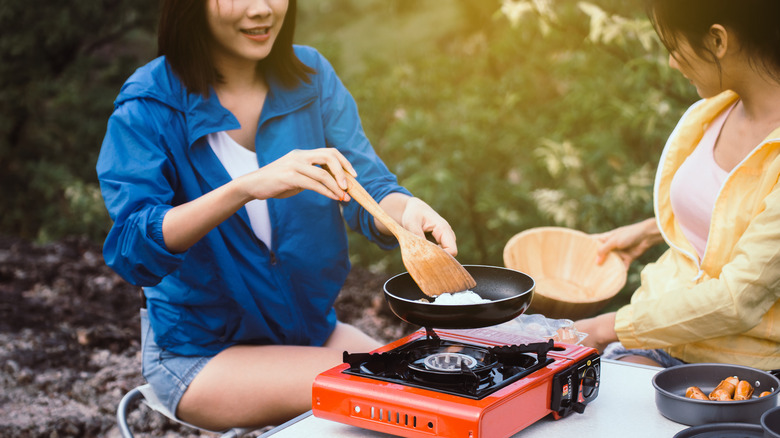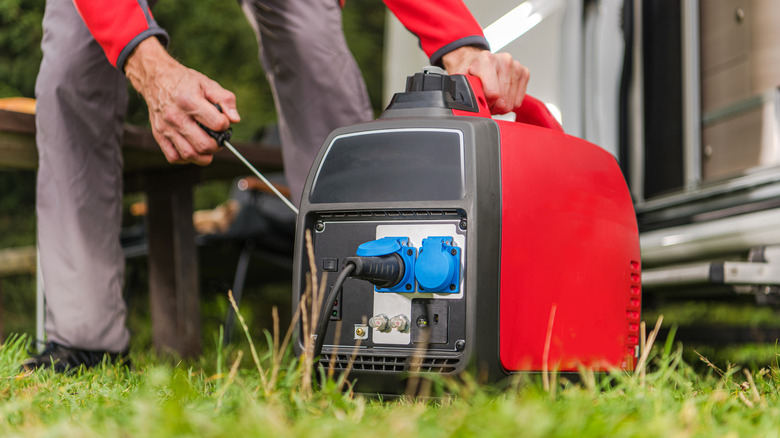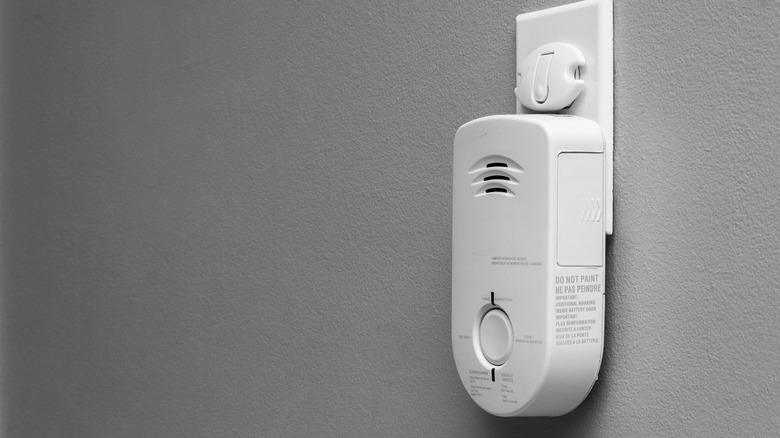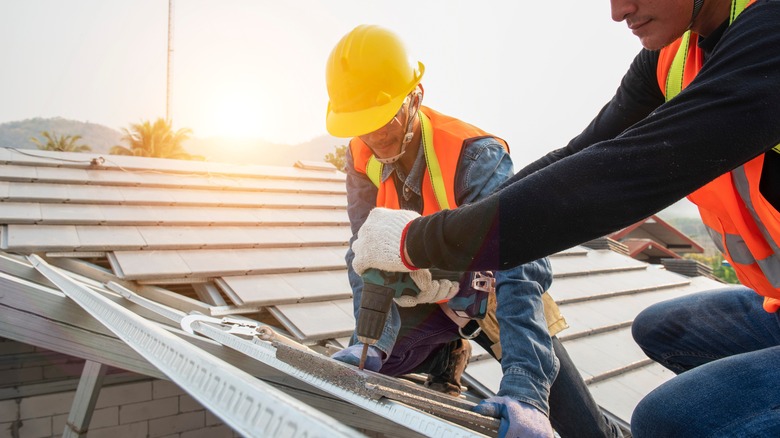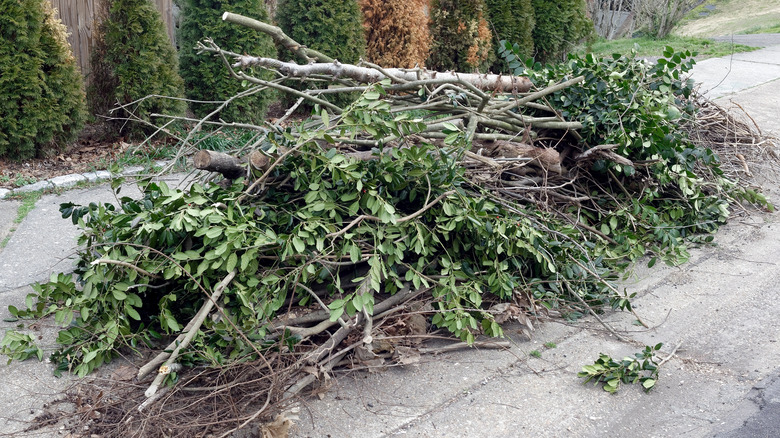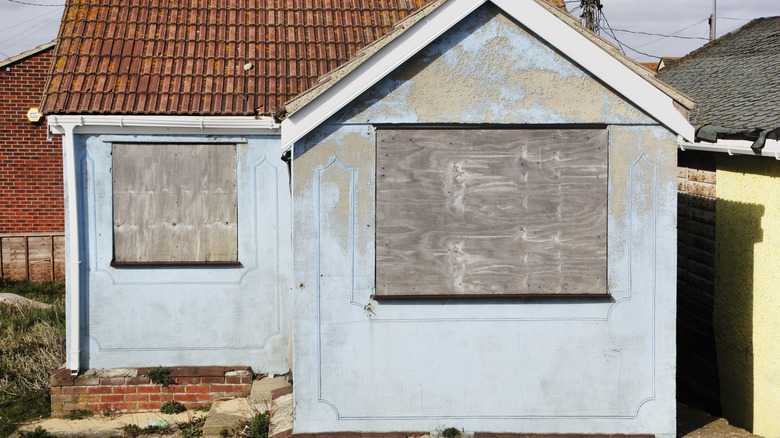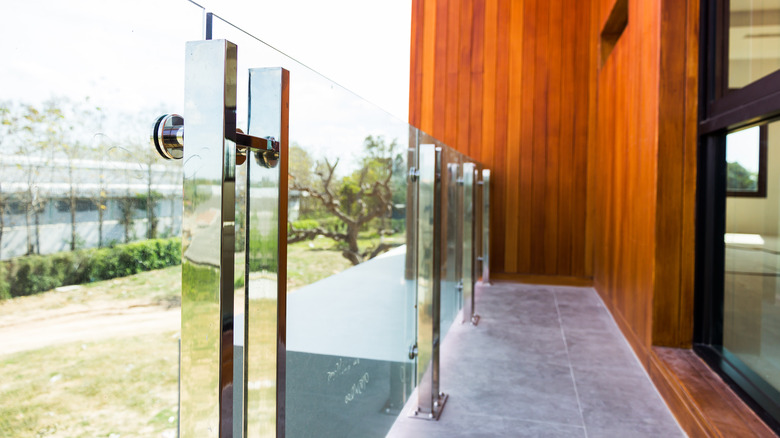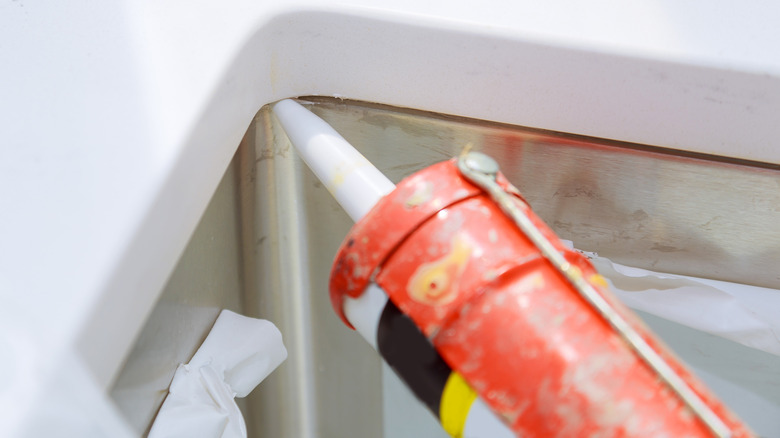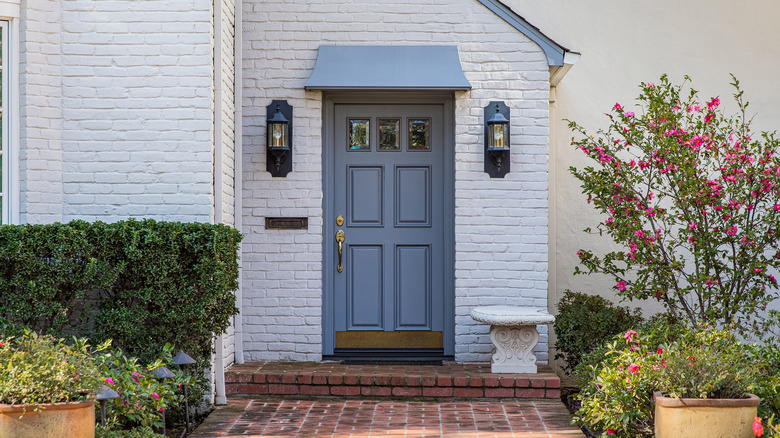How To Prepare Your Home For Hurricane Season
Hurricanes are dangerous storms with expensive paths of destruction. According to the National Hurricane Center, the great hurricane of 1900 impacted Galveston, Texas, and caused tides up to 15 feet high. They washed over the island, killing what historians believe to be as many as 12,000 people, a devastating loss of life. In more recent years, Hurricane Katrina decimated the city of New Orleans when its heavy rains and high tides caused the Lake Pontchartrain levees to fail. This failure caused catastrophic flooding and killed approximately 1,000 people in Louisiana alone.
While we cannot always predict the path of hurricanes, or the horror they will bring, we can do small things throughout the year to ensure that when the time comes, ourselves, and our homes, are just that little bit safer. If you live in the Gulf Coast or Mid Atlantic region of the United States, it is likely that you will experience a major storm even at least once in your lifetime, with the threat of wind damage and flooding popping up every couple of years. While those who have lived in the area most of their lives might already know how to prepare, here is our best advice for recent transplants, or those wishing to review their safety measures.
Install a local weather app
One of the first things you should do to get ready for hurricane season is to install a weather app on your phone. While most smartphones do come with a default app, many storm tracking organizations have applications to help you stay on top of the weather in your local area. According to The National Weather Service, you can create a bookmark of the service's website on your home screen to get up to the minute forecasts for your area. Having access to radar images, evacuation warnings, and up-to-date flood levels is way more important than just knowing the ambient temperature.
You can also use these apps (as well as the National Hurricane Center) to keep an eye on developing tropical depressions as soon as they are announced. This way, you will have a good idea of what is heading your way long before it ever becomes a tropical storm, let alone a hurricane.
Create a go bag
When a hurricane is heading towards your home, things can get bad pretty fast. The best advice from local emergency officials could turn from "hunker down" to "seek higher ground" in mere minutes. So, you should be ready to evacuate at all times. To save time running around the house at the last minute, have an emergency kit ready to go ahead of time.
According to the Red Cross, you should always bring a paper map of your local area. This way, even if your phone dies, or you lose it, you will be able to find your way. You should have a flashlight with extra batteries, a charging pack for your phone, a hand-crank radio (or a battery-powered one, with extra batteries), as well as a small first aid kit, and copies of important insurance papers and home documents. At the beginning of each hurricane season, it's also a good idea to purchase bottles of water (1 gallon per person in your home, per day) as well as non-perishable food items. If you wait to buy them until a storm is on the way, you might find that there are fewer supplies available and end up paying higher prices.
Purchase a portable gas grill
According to Oregon CUB, it's a myth that your gas appliances will still work if your power goes out. This is because while they mainly use gas to operate, they still require electricity to turn on. So, your gas furnace, your gas stove, and even your gas water heater are likely to be down for the count. Luckily, most hurricanes strike during the summer, so keeping warm is going to be the least of your worries.
If the power does go out for an extended period of time, though, you are going to need to eat. After Hurricane Ike struck Houston in 2008, some of the city's residents were without power for over two weeks (via State Impact). One of the best ways to ensure that you can be well-fed if this ever happens to you is to purchase a small camping stove. These stoves run on small cans of gas that can be easily stored in your garage. If you don't end up needing them during hurricane season, they can be used on a family vacation to the woods or beach. Remember: never use a gas stove indoors or you risk carbon monoxide poisoning.
Consider investing in a generator
Hurricanes can have long-lasting negative impacts on the infrastructure of the areas they hit. This means that your power could not just be out for a few hours, but a few days. In some cases, it might even be a week or more before the lights come back on. If this happens, then having a portable generator on hand can be life-saving after a hurricane.
According to Consumer Reports, personal generators do way more than just power lights. Your HVAC system, Wi-Fi, and appliances also rely on power. Since hurricanes normally strike during the summer months, being able to keep your home cool (and your refrigerator running!) could keep you comfortable and fed while you wait for things to return to normal. If you have a generator, you can also provide a place of refuge for your neighbors to charge their phones and cool down – thus avoiding further emergencies.
A quick safety tip to remember: never run a generator inside your home. In fact, it must remain at least 20 feet away from your home at all times, preferably even farther away. In addition, be sure that the exhaust from the generator is pointing away from your home (and not directly towards your neighbors, either). Generators create a large amount of carbon monoxide, which can be fatal when inhaled.
Set up a carbon monoxide monitor
Even if you do not have a generator, setting up multiple carbon monoxide detectors around your home can keep you safe. If you do have one, placing a monitor in a few rooms around your house can quickly alert you if fumes from the generator are leaking into your home. According to SafeWise, it's important to have these monitors because carbon monoxide doesn't have a taste or smell. You cannot see it, either. Instead, you will just have a sudden onset of flu-like symptoms.
You might feel nauseous or dizzy, get a really bad headache, throw up, or even faint. A detector will alert you to the substance's presence before any of these symptoms set in, so having one on hand can keep you safe if a potential leak occurs during a storm. In addition to fumes from a generator, carbon monoxide can come into your home from things like gas grills, gas stoves, and the like — all things you might consider using during a storm or power outage.
Review your home insurance policy
Depending on your state and your specific policy, your homeowner's insurance coverage can vary greatly. Sometimes, flood insurance is a completely different policy which you must purchase separately. According to Policy Genius, to avoid the headache and heartbreak of learning you were not actually covered for everything after the storm is over, take the time to investigate things now.
It's important to understand the dwelling coverage (your home's actual structure) and personal property coverage (everything inside your home) are two separate things. It's great to have a policy that covers the costs to completely rebuild your damaged home. However, you could still be out tens of thousands of dollars to replace your furniture, electronics, and clothing if you don't update your policy. A final important question to ask your insurer is about the true cost of your deductible. Most states allow a separate hurricane deductible, which means higher costs to you as the homeowner. Essentially, wind and water damage caused by a hurricane is typically going to be more expensive out of pocket for you than if the same damage was caused by a regular thunderstorm.
Take note of your valuables
Before hurricane season begins, it's a good idea to have an idea of what is in your home and its approximate value, just in case there is damage to it during a storm. According to Bank Rate, the best way to do this is by creating a home inventory and updating it often. You can start by sectioning your home into rooms, or your items into categories – whatever is easier for you. For example, you might choose to document your large screen tv in your bedroom, your expensive bed frame, and your jewelry collection in one go. Or, you might decide to work on each of these things separately, like furniture, electronics, or things you wear.
Take photos of things where possible and also take note of the serial numbers, makes, and models of everything that you can. It's a good idea to store your work digitally to ensure that it is saved as you go. This is also a good idea because you don't have to worry about it being lost or damaged in a storm, or left behind during an evacuation. To make things even easier, certain home insurance companies even have an app or online portable to create a home inventory. Be sure to speak to your insurance company about all of your options.
Ensure your roof is sealed
If your roof isn't sealed, it can be easier for it to leak during a hurricane. This can cause lots of problems like water damage to your belongings, mold in your roof and in the interior of your home. Excess water can even cause your roof to cave in! To avoid this, Roof Rocket recommends sealing up all the valleys on your roof well in advance of a major storm. A roof valley is the part of the roof where two or more planes of shingles come together, forming a small dip. It's very easy for water to pool here during a storm.
The best way to avoid this is by installing metal flashing on top of each of your roof's valleys. This way, during a bout of heavy rain, all of the water will simply flow down the metal and into your gutter, or straight into your yard. To avoid any complication of water back up, you will also want to make sure your gutters are empty. You'll also want to make sure that your gutters and downspouts are big enough to handle the amount of water produced by a large storm.
Clear your yard of dangerous debris
You don't want dead branches or pebbles flying into your home during a hurricane. So, if one is forecasted to head your way, spend about an hour or so in the days leading up to landfall cleaning up your yard. According to the Green Pal, most lawn care leading up to a storm is pretty much what you would do on a normal clean-up day. Take a moment and examine your yard. Do any trees have dead branches that need to be trimmed anyway? By taking care of that now, you won't have to pull it out of your living room later on.
How about your gutters, are they cleared out? You will want all water to be able to flow freely during a storm. If you have any sort of gravel landscaping (maybe a path to your door, or around the base of a fountain) in your yard, you might consider scooping it up and storing it elsewhere during a hurricane. If the wind is strong enough to topple a tree, or knock down a fence, imagine how much damage could be done with gravel flying everywhere.
Purchase plywood covers for your windows
It's one of the most common things you will see on TV when looking at areas impacted by hurricanes: boarded up windows. When you think about it, it makes sense. Boarding your windows can be a great protection for your home because it ensures the glass doesn't break. This serves two purposes: it keeps anyone in the area safe from being injured by flying shards of glass. In addition, it protects the items inside your home from wind and water damage.
If you live in an area consistently impacted by hurricanes (like the American Gulf Coast or Mid Atlantic region), it's a good idea to beat the rush and purchase the materials needed ahead of time. Once an evacuation warning is issued, you might not have time to board up windows, let alone go out and purchase the materials needed for it. According to Reece Windows, you should purchase plywood for the job. It typically comes in 4x8 sheets and you can cut it to fit your windows from there. Be sure it's at least ⅝-inch thick so that it can properly protect your house.
Update glass doors and balconies to tempered glass
Sliding glass doors should be made of tempered glass, so they can hold up a little bit better in a storm. According to Window Film Depot, tempered glass is a special type of heat treated glass. This makes it about four times stronger than regular glass. While a bit sturdier than regular glass, tempered glass isn't completely resistant to breaking. So, if you have sliding doors and windows made from it, be sure to still board them up if a hurricane is forecasted to impact your area.
However, if it is broken, tempered glass is also designed to shatter into tiny, round pieces that look a bit like crushed ice. These pieces are so small that they do much less harm than large, jagged shards of glass might cause. So, if you are inside your home during bad weather and the window breaks, there is a significantly less chance of becoming injured.
Seal all outdoor wall openings
Before a big storm comes your way, take the time to seal up all outdoor wall openings. This could be things like closing all vents, then checking around them to ensure there isn't a draft. Take a look at things like outdoor electrical outlets, and spots where cables or pipes go through the wall, too. If there is a gas leak somewhere, the winds are howling, or even if the flood waters are rising, you will want to keep as much of the outside out as you can. These small nooks and crannies might just be your last line of defense against the elements, and critters seeking refuge.
According to KTAR, you can use a high-quality urethane-based caulk to prevent water getting inside. You should be able to purchase it at any local hardware or home improvement store. It's a quick job that anyone, even those of us very new to the DIY world, should be able to complete in just a few minutes.
Prepare exterior doors for high winds
If a hurricane is forecasted to pass through your area, there are a few things you need to do to your doors to increase safety and minimize damage. The first is inspecting each exterior door to make sure it can withstand the potentially high winds that come with a hurricane. According to The Home Depot, weather-proofing doors is easy and doesn't take too long. The main idea is that you want the door to have a solid foundation, so it doesn't get blown off. To achieve this, simply make sure that each door has three sturdy hinges. The increased number of contact points makes the door failing less likely. Keep the door locked during a storm, and ensure the deadbolt is an least one inch long. This gives the door plenty to hold on to.
You should also check your interior doors as well. Keeping each door in your home shut during a storm can help keep damage contained, should anything happen to the roof or windows or a particular area. If the door is closed, the wind and rain will have a harder time reaching other spaces (via US Harbors).
